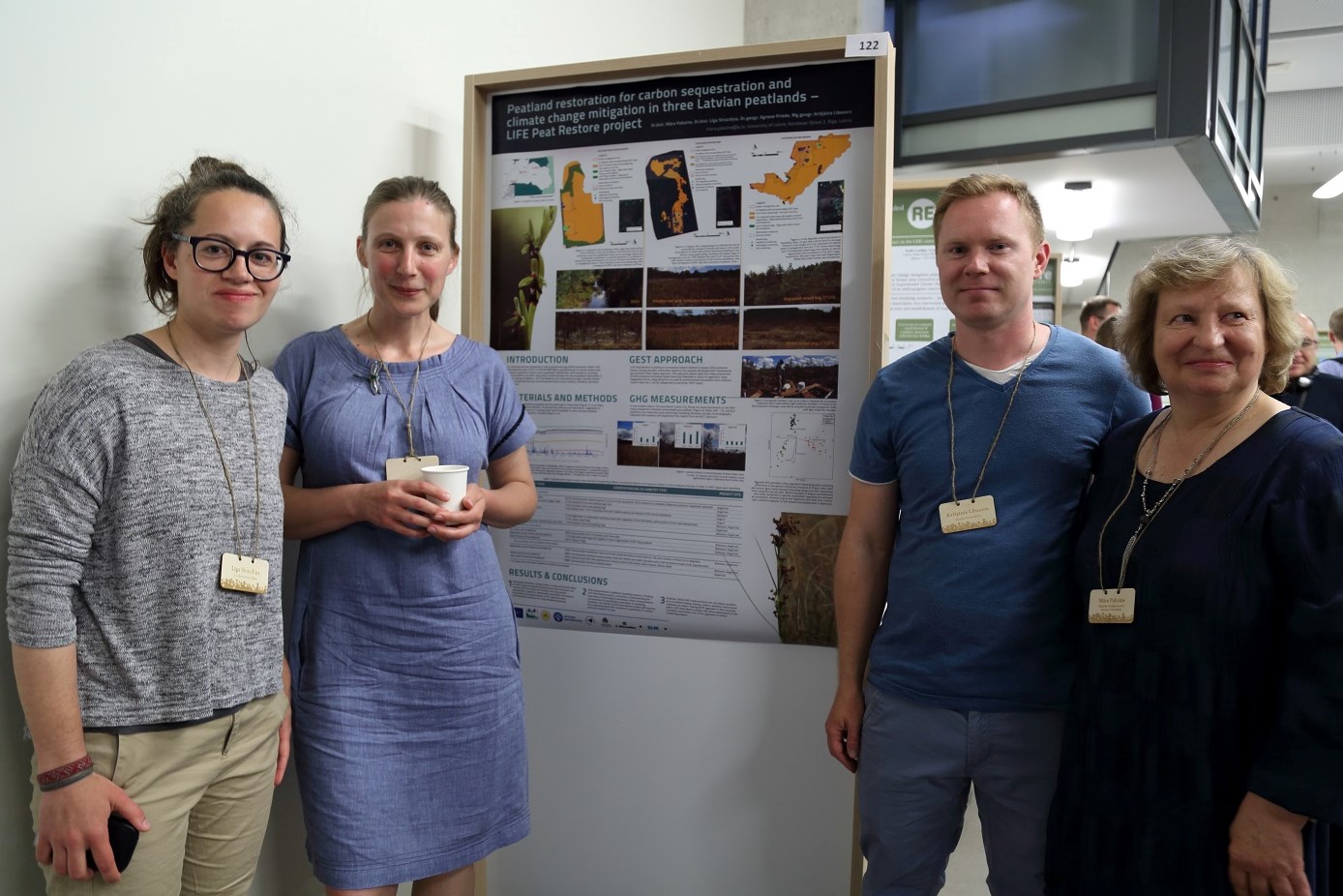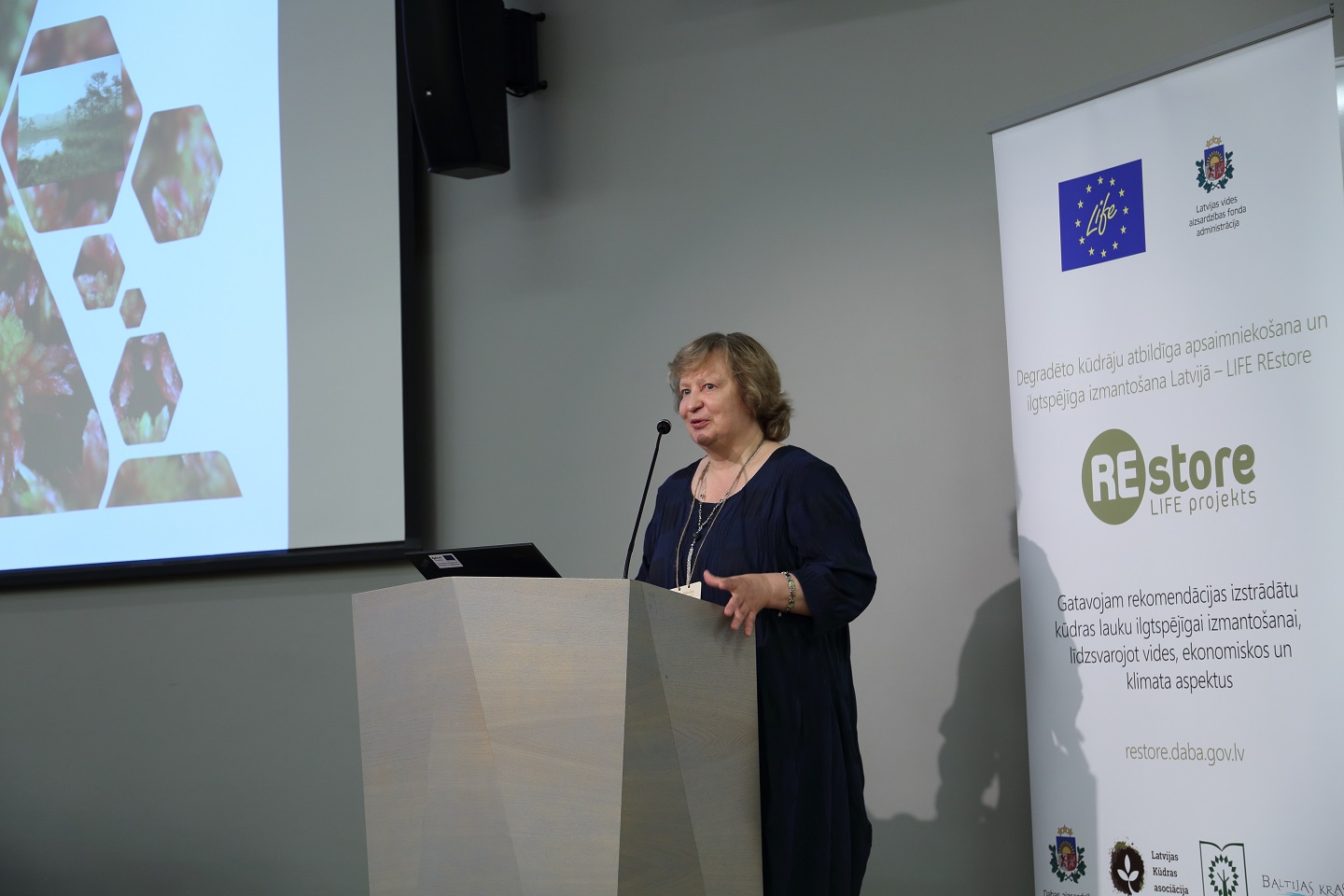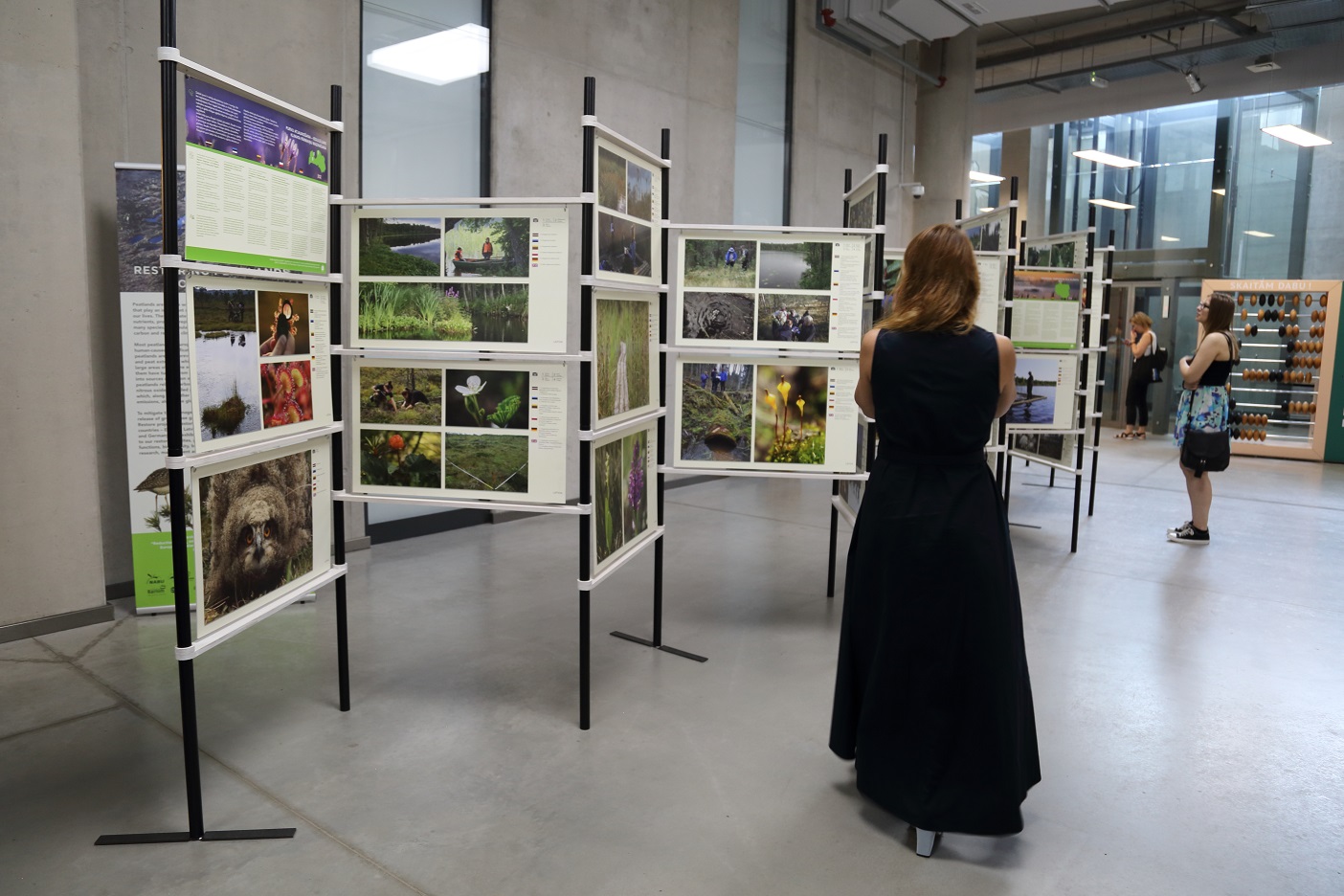On June 13–14, 2019, the Academic Centre for Natural Sciences of the University of Latvia hosted an international conference organised by LIFE Restore project under LIFE Climate Action programme. The conference was dedicated to responsible and sustainable management of peatlands and attracted more than 150 participants from various organisations (governmental institutions, peat industry, NGOs, research institutions, etc.) from Latvia and other European countries. The conference focused on greenhouse gas (GHG) emission measurements and recent results from Latvia to be used in elaboration of national emission factors, after-use of extracted peatlands and related favourable and unfavourable effects from various perspectives including contribution to climate change mitigation. Several peatland restoration examples from different countries were presented and discussed. The panel discussion arose many questions on GHG accounting and potential climate change mitigation measures.

This was the right context and target audience to contribute also with LIFE Peat Restore project experience and results, therefore Latvian, Lithuanian and Estonian LIFE Peat Restore experts participated in the conference. LIFE Peat Restore results were presented by the project experts M. Pakalne, L. Strazdiņa, A. Priede and K. Libauers (University of Latvia) in a poster that provided a short overview on vegetation mapping and first results of GEST approach, direct GHG measurements, and water table and vegetation monitoring. The results are summarized in an article within the conference volume. Also, the results from Lithuania were summarized in an article by N. Zableckis (Lithuanian Fund for Nature) in an oral presentation, a synthesis of various peatland restoration approaches and projects in Lithuania, including recent LIFE Peat Restore results and proposed Sphagnum planting in Aukštumala bog. The results are summarised into the conference volume. Latvian national coordinator M. Pakalne gave an overview on the vegetation recovery of post-harvested peatlands in Latvia and compared them to LIFE Peat Restore areas in Lithuania and Poland, as well as supported rehabilitation of extracted peatlands including Sphagnum reintroduction as one of the most appropriate methods for reclaiming highly degraded peatlands.


The LIFE Peat Restore project demonstrated the travelling photo exhibition “Restoring Peatlands form Climate” which was one of the conference events and was accessible to all participants of the conference as well as anyone frequenting the Academic Centre during the conference days.



